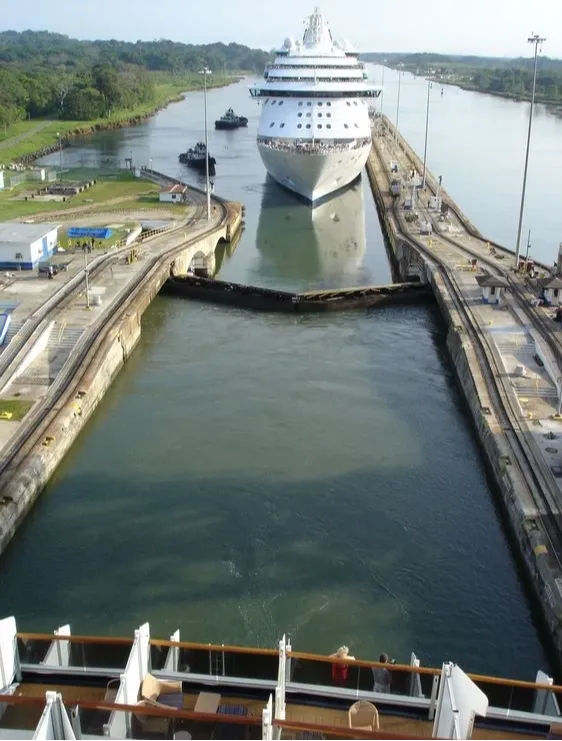The Panama Canal: History & Importance for Central America

The Panama Canal is one of the great engineering marvels in history. Situated at the narrowest point of the Isthmus of Panama, it has played a transformative role in the world’s history, reshaping geography and society in many ways.
History of the Panama Canal
The idea of a canal that links the Atlantic and Pacific Oceans dates back centuries. Indigenous people in the region and European colonizers recognized the potential of such a waterway. However, it was not until the 19th century that serious attempts to construct a canal began.
From 1859-1869, French diplomat Ferdinand de Lesseps led construction of the Suez Canal in Egypt, connecting the Mediterranean Sea to the Red Sea.
This inspired interest in building a Central American canal. In 1881, Lesseps and his company began construction of a canal in Colombia (which controlled modern-day Panama). They hoped to create a sea-level canal like the Suez.
The project encountered many challenges, including difficult terrain, heavy rainfall that caused landslides, and tropical diseases such as malaria and yellow fever.
Combined with engineering miscalculations, the project faced financial difficulties and a high mortality rate among its workers. An estimated 22,000 people died during the French construction of the canal, making it one of the deadliest projects in modern history.

In 1889, the French canal project was abandoned, and the United States acquired its assets in 1904. Colombia rejected America’s offer for the land however, so the U.S. supported a revolution there. Panama declared its independence from Colombia and agreed to allow the U.S. to build the canal.
America’s engineers took on a different approach to building it. Instead of a sea-level canal, a lock-and-lake system was implemented.
An artificial freshwater lake was created by damming up the Chagres River and Lake Alajuela. Locks at each end lift ships up to Gatun Lake and then lower the ships at the other end. Construction of the Panama Canal was completed, and it officially opened in 1914.
Geographical Impact
The Panama Canal’s location and impact on global trade makes it an essential component of modern commerce and transportation. The canal reduced travel distances for ships traveling between the Atlantic and Pacific Oceans by thousands of miles. It also allowed for more efficient trade and faster delivery of goods, significantly impacting the global economy.
The construction of the Panama Canal also had an environmental impact on the area. The creation of Gatun Lake submerged large areas of rainforests and wetlands and drastically changed local ecosystems.

The canal has been open for over a century, and over time, some ecosystems have adapted to these changed conditions. Furthermore, environmental conservation efforts in this region have sought to mitigate past, present, and future ecological disturbances.
Societal Impact
The Panama Canal’s influence extends beyond its geography. It has had massive social, political, and economic consequences.
The canal has been a catalyst for economic growth in Panama, generating revenue through tolls and boosting related industries. Almost 15,000 ships pass through it each year. It has also helped to facilitate trade for countries around the world.
In fact, because of America’s involvement with the canal, Panama adopted the US Dollar as its official currency along with the Panamanian Balboa. Panama no longer prints paper money but does use Panamanian Balboa coins in addition to US paper currency.
Control of the Panama Canal has also been a source of contention and diplomatic negotiations between the United States and Panama. After a period of joint American-Panamanian control, the canal was taken over by Panama's government in 1999.
In 2016, the canal was expanded to allow wider ships, now known as Neopanamax ships, to pass through.
The canal’s construction brought a diverse workforce to the region, leading to cultural exchanges and a more multicultural society that has continued to today.
The Panama Canal remains a symbol of technological achievement and has reshaped the world’s geography and society. As the canal continues to adapt to the demands of the modern world, its impact on the region and the world remains forever undiminished.